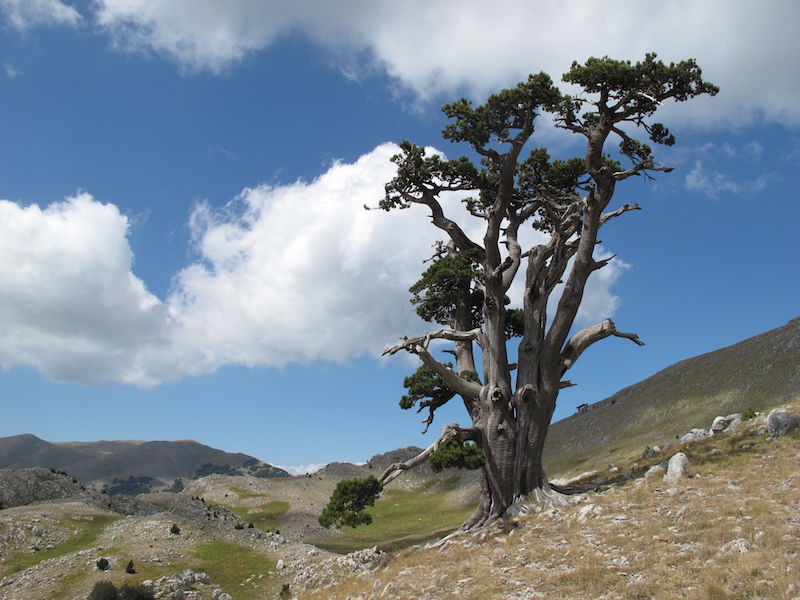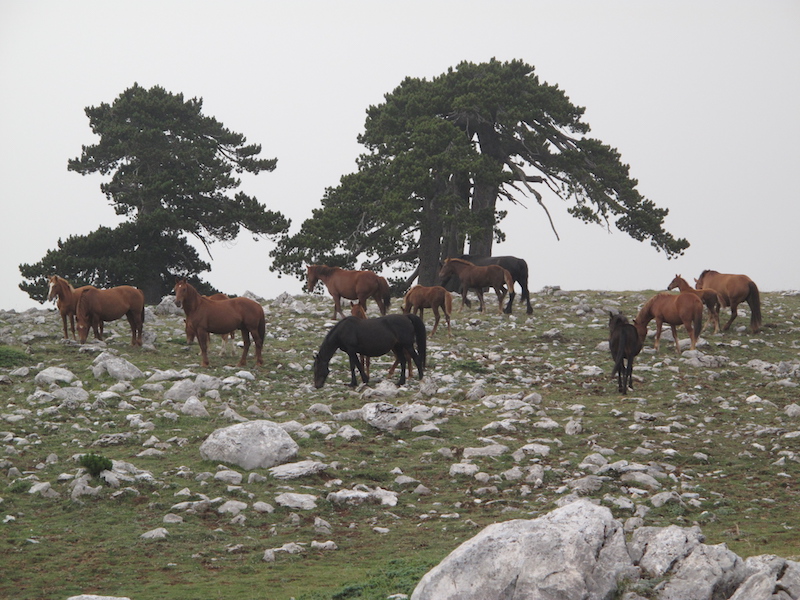idee e itinerari turistici per scoprire la Basilicata

Rotonda - Pollino EN (1)
What to see in Rotonda and on the Pollino massif
Written by BasilicataDaVedereBy discovering the small town of Rotonda, Basilicata visitors have the chance to start a journey in a majestic and uncontamined nature. It is from this village in fact that the most important paths branch off to discover the Pollino National Park which is currently the largest natural park in Italy, with its 192.000 hectares.
DEEP INTO THE UNCONTAMINED NATURE
Mountain paths between woods and brooks; walks on the pure white snow; exciting descents onto tumultuous creeks: Pollino is the favourite place for those who love nature, sports and adventure. And then, there is the rare Bosnian pine - the tree that is the symbol of the park and that, with its twisted shapes, represents an authentic monument carved in the nature. The “Patriarca”, as the oldest pine is called, is more than 900 years old!
A legendary, ancient, ancestral place is the Romito Cavern, with its prehistoric graffiti; and then there are traditions, like the Arboreal rites, whose origins cannot be traced back but keep still living in these places' people.
Come to visit Pollino! Leave your pc and smartphone at home and let this ancient past "lull" you!
THREE GOOD REASONS TO VISIT ROTONDA AND THE POLLINO NATIONAL PARK
1. THE BOSNIAN PINE
If you are nature lovers, in your Basilicata tour you cannot miss to visit the Pollino National Park. We suggest that you reach the Serra of Crispo (picture below), well known as the “Garden of gods”. It is right here that you will be able to admire the Bosnian pines in all their beauty, on an upland with a breath-taking view.
Other places to visit are the Duglia Lake - a small mountain lake located at 1375 metres at the foot of the Serra of Crispo - and the Raganello Gorge - a spectacular canyon created by the river that makes its way through the mountains.
The green of woods in the warmer seasons leaves room for white snow in winter; the Pollino would deserve a visit in two different periods of the year, to admire nature in its whole unpolluted splendour.
2. PLAYING SPORTS IN THE NATURE
Trekking, cross-country skiing, canyoning and rafting are some of the ways which the visitors can live their own experience on the Pollino.
-Trekking: many paths start from villages around, like, for instance, Rotonda (headquarters of the Park), Castelluccio Inferiore, Castelluccio Superiore, Viggianello and Terranova di Pollino.
- Cross-country skiing and snowshoe lovers have the possibility to choose between one of the three layouts up to 1500 metres AMSL, starting from Terranova, Viggianello and Rotonda. It is possible to entrust yourself to skiing schools or official guides to be led along the Park's ways.
- Those who exercise canyoning can admire canyons, waterfalls and natural pools by crossing the waters of Raganello's brook, in the heart of the park.
- If you are looking for thrilling sensations, we suggest that you start your trip from Viggianello to reach the river Mercure for rafting; otherwise you could jump in an exciting flight from San Costantino Albanese's peaks, on a hang-glider connected to a steel wire, reaching the speed of 80 km/h. This is called the “Flight of the Eagle” and it is for 4 people flying all together.
- Moreover,the Park has climbing walls, iron roads, and paths to travel by riding or cycling and sites for speleology.
3. LUCANIAN TRADITIONS
After a day spent playing sports and discovering the nature, all you can do is sit at the table to savour some of the most flavourful Lucanian dishes. Rotonda is in fact the birthplace of Fagiolo Poverello Igp (high quality navy bean) of a white colour (Dop = protected designation of origins) and of the Rotonda red aubergine (Dop), fruit of an environmentally friendly plantation technique.
If you want to immerse in the ancient Lucanian tradition, you must visit these places between May and September, to be able to attend the Arboreal rites. Particularly in Rotonda, there is the "threes wedding", whose rite origins from the antique Celtic mythology!
http://basilicatadavedere.com/it/blog/itemlist/category/48-rotonda-pollino-en#sigProIdaebd5ebb52
PHOTO CREDIT
Pollino: Santo Galatà
Le foto: Eduardo De Stefano




